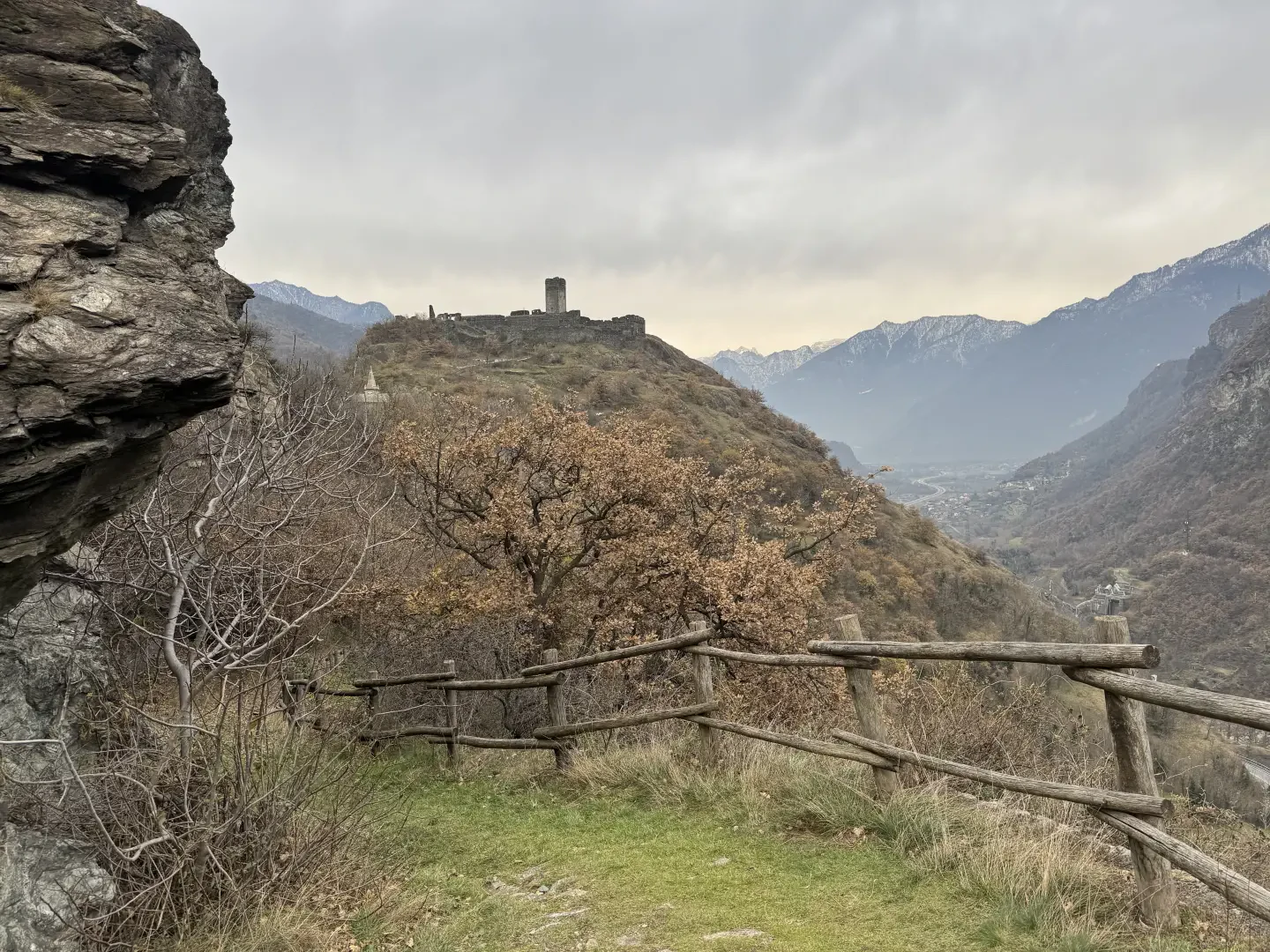Saint-Germain Castle

Introduction
The Castle of Saint-Germain, also known as Tour Saint-Germain, is a fascinating medieval ruin located in the hamlet of the same name in the municipality of Montjovet, in the Aosta Valley. Perched 656 metres above sea level, it dominates the gorge carved by the Dora Baltea river, offering a panoramic view of the central valley. Its strategic position on a rocky spur, historically known as Mons Jovis, allowed effective control of the village below and the communication routes between Verrès and Saint-Vincent. Today, the castle can only be reached from the north side of the promontory via a footpath, but access is limited due to the risk of collapse.
Description
The castle is one of the most imposing fortifications in the region, characterised by a structure typical of primitive Valdostan castles. In the centre stands a 19-metre-high square tower, surrounded by a mighty wall that stretches some 200 metres. The walls feature stone arches and large medieval windows, while later interventions in the 16th century added Renaissance-style mouldings and decorations. Distinctive elements include a Renaissance bastion on the north side and defensive structures adapted to the use of firearms, commissioned by Amadeus VIII and his successors. The interiors comprised residential spaces, garrison quarters and armament stores.
The castle's origins date back to the 11th-12th centuries, when the noble De Mongioveto family had it built to control the transit route below and impose tolls on travellers. In 1270, the Count of Savoy took possession of it, accusing Feidino of Montjovet of harassing travellers. Later, in 1295, the fief passed to Ebalo I of Challant, lieutenant of Amadeus V, marking the rise of the Challant family in the region. In 1438, Francesco di Challant sold the castle to the Savoys, who turned it into a military fortress, maintaining a garrison there until 1661. In that year, Charles Emmanuel II ordered the partial dismantling of the structure to prevent its use by enemy forces, transferring the garrison to the Fortress of Bard. Since then, the castle fell into ruin.
In addition to its defensive function, the castle is linked to significant historical events. In 1377, Ibleto di Challant imprisoned the bishop of Vercelli, Giovanni Fieschi, there for about a year to force him to cede the lordship of Biella to the Count of Savoy. These episodes testify to the strategic and political importance of the castle in the Middle Ages.
The castle is currently not accessible to the public due to the risk of collapse, and a gate prevents entry. Nevertheless, its imposing tower continues to characterise the landscape, visible from many points in the region and remaining a historical landmark for residents and visitors alike. The castle is owned by the Valle d'Aosta Region, which recognises its historical and cultural value.